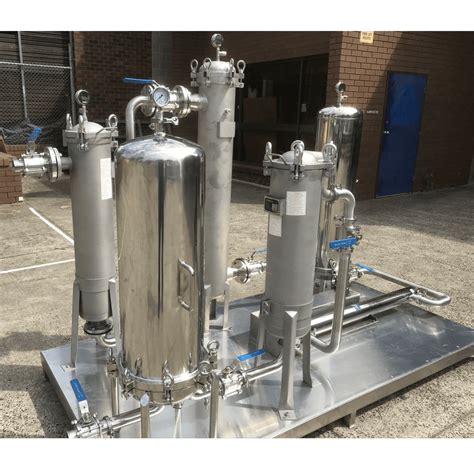The Ultimate Guide to Food and Beverage Filtration: Recipes for Purity and Flavor
Food and beverage filtration is crucial for maintaining quality, safety, and extending the shelf life of your products. Whether you're a homebrewer, a small-scale producer, or a large-scale manufacturer, understanding the different filtration methods and their applications is key. This guide will delve into various filtration techniques, offering "recipes" to achieve optimal results for different food and beverage types.
Understanding Filtration Basics
Before diving into specific recipes, let's establish a foundation. Filtration separates solids from liquids or gases using a filtering medium. The choice of this medium depends heavily on the type of contaminant you're removing and the desired outcome. Common filtering media include:
- Paper filters: Suitable for removing larger particles, commonly used in coffee brewing and some juice clarification.
- Cloth filters: Offers a coarser filtration than paper filters, often used for straining sauces and jams.
- Membrane filters: Used for finer filtration, removing bacteria and other microorganisms. Common types include microfiltration, ultrafiltration, and nanofiltration.
- Activated carbon filters: Remove unwanted colors, odors, and flavors. Excellent for water purification and improving the taste of spirits.
- Diatomaceous earth (DE): A natural filter aid used for larger-scale filtration of liquids like wine and beer.
Filtration "Recipes" for Various Food and Beverages
Now, let's explore specific filtration applications with step-by-step guidance:
1. Clarifying Fruit Juice: A Simple Recipe
Goal: Remove pulp and sediment for a clear, bright juice.
Method: Use a combination of methods. First, strain the juice through a fine-mesh sieve or cheesecloth to remove large pulp pieces. Then, employ a paper filter (coffee filter works well) for secondary filtration, achieving a cleaner, clearer juice.
Pro Tip: For larger quantities, consider using a centrifugal separator for initial clarification before final filtration.
2. Brewing Crystal-Clear Beer: Mastering the Process
Goal: Achieve a brilliant, haze-free beer.
Method: Beer filtration usually involves multiple stages. First, use a coarse filter to remove larger yeast and hop particles. Then, employ a diatomaceous earth (DE) filter for fine filtration, ensuring a crystal-clear beer. Finally, polish the beer using a membrane filter (0.45-0.65 micron) to remove any remaining haze.
Caution: DE is a potential respiratory irritant, so always wear appropriate safety equipment when handling it.
3. Purifying Water at Home: A Simple Approach
Goal: Improve water taste, remove chlorine, and reduce sediment.
Method: For simple home water purification, a combination of activated carbon and a sediment filter is effective. These filters are available commercially and are relatively easy to install and maintain.
Pro Tip: Regularly replace the filters according to the manufacturer's instructions.
4. Fine-Tuning Wine: Enhance Clarity and Stability
Goal: Remove haze and improve the stability of the wine.
Method: Similar to beer, wine filtration often utilizes a multi-stage approach. First, remove large particles using a coarse filter. Then, employing DE filtration followed by a membrane filter (0.45-0.65 micron) will clarify and stabilize the wine, preventing unwanted haze formation.
Note: Excessive filtration can remove beneficial components, so it's important to carefully consider your target clarity and potential impact on flavor.
Conclusion: Mastering the Art of Filtration
This guide provides a foundational understanding of various food and beverage filtration techniques. Remember to carefully consider your specific needs, the type of product you're working with, and the desired outcome when selecting a filtration method. Experimentation and optimization are key to achieving optimal results and enhancing the quality and shelf life of your food and beverages. Always prioritize safety and follow appropriate handling procedures when using various filtration media.
